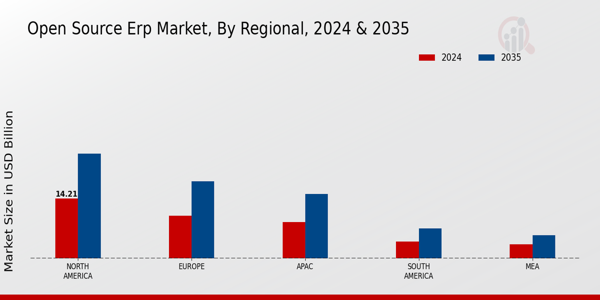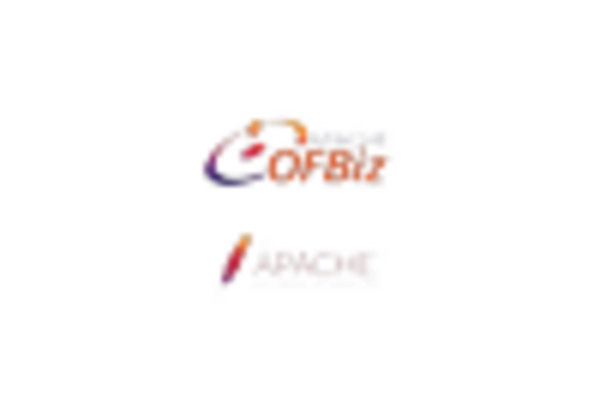Growing Demand for Customization
Customization is a pivotal driver in the Open-Source ERP Market, as businesses increasingly seek tailored solutions that align with their unique operational requirements. The flexibility inherent in open-source software allows organizations to modify the codebase, enabling them to create bespoke functionalities that proprietary systems may not offer. In 2025, it is projected that 65% of companies will prioritize customization in their ERP selection process. This trend is particularly pronounced among industries with specialized needs, such as manufacturing and healthcare, where standard solutions often fall short. As a result, the demand for customizable open-source ERP systems is likely to surge, further propelling the growth of the Open-Source ERP Market.
Cost Efficiency and Accessibility
The Open-Source ERP Market is characterized by its cost efficiency, which appeals to small and medium-sized enterprises (SMEs) seeking to minimize operational expenses. Unlike proprietary software, open-source solutions often come with lower licensing fees, allowing businesses to allocate resources to other critical areas. In 2025, the average cost of implementing an open-source ERP system is estimated to be 30% lower than that of traditional ERP systems. This financial advantage encourages a broader adoption of open-source solutions, as companies can leverage robust functionalities without incurring prohibitive costs. Furthermore, the accessibility of these systems fosters innovation and competition, as organizations can modify and enhance the software to meet their specific needs, thereby driving growth within the Open-Source ERP Market.
Enhanced Data Security and Control
Data security remains a paramount concern for organizations, and the Open-Source ERP Market addresses this issue by providing enhanced control over data management. Open-source solutions allow businesses to host their systems on private servers, thereby reducing the risk of data breaches associated with third-party hosting. In 2025, it is anticipated that 40% of enterprises will prefer open-source ERP systems for their superior security features. This preference stems from the ability to audit the source code and implement security measures tailored to specific organizational needs. Consequently, the emphasis on data security is likely to drive the adoption of open-source ERP solutions, reinforcing their position within the Open-Source ERP Market.
Integration with Cloud Technologies
The integration of cloud technologies is transforming the Open-Source ERP Market, as businesses increasingly migrate to cloud-based solutions for enhanced scalability and flexibility. Open-source ERP systems are particularly well-suited for cloud deployment, allowing organizations to access their software from anywhere, thus facilitating remote work and collaboration. In 2025, it is estimated that 55% of open-source ERP implementations will be cloud-based, reflecting a significant shift in how businesses operate. This trend not only reduces infrastructure costs but also enables organizations to scale their operations seamlessly. As cloud integration becomes more prevalent, it is likely to bolster the growth of the Open-Source ERP Market, attracting companies seeking modern, agile solutions.
Rising Community Engagement and Support
Community engagement plays a crucial role in the Open-Source ERP Market, as collaborative efforts among developers and users foster innovation and continuous improvement. The active participation of a global community ensures that open-source ERP systems remain up-to-date with the latest technological advancements and user needs. In 2025, it is projected that community-driven enhancements will account for 25% of new features in open-source ERP solutions. This collaborative environment not only accelerates development but also provides users with a wealth of resources, including forums and documentation, to troubleshoot issues and share best practices. As community support strengthens, it is likely to enhance the overall appeal of open-source ERP systems, driving further adoption within the Open-Source ERP Market.


















Leave a Comment